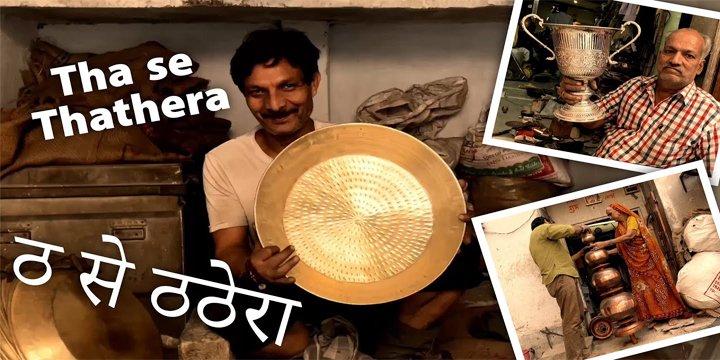Thathera Metal craft
Context:
- Despite the UNESCO Intangible Cultural Heritage inscription of the thathera craft of Jndiala Guru since 2014, the financial and social condition of the craftsmen has not improved much.
- Recognising the cultural heritage worth of the ‘thathera’ metal craft in Jnadiala Guru, in its 9th session held in Paris in 2014, UNESCO ‘Intergovernmental Committee (IGC) for the Safeguarding of Intangible Heritage’ decided to inscribe the craft on its list.
- This is the first metal craft from India to find a place in UNESCO’s Intangible Cultural Heritage list.
- Recently, the Punjab government has declared the Thathera Bazar a Heritage street and built a gate at the street entry symbolising the value of the craft, but has neither waived off its share in GST nor taken any serious steps to help them improve their condition.
About:
- The thathera craft utensils are of both Utilitarian and ritualistic value made of copper, brass and ‘kansa’ (an alloy of copper, zinc and tin).
- The ancient Indian school of medicine, Ayurveda, recommends the metals used.
Significance:
- The Thatheras of Jandiala Guru in Punjab, Indiaare a clearly defined community sharing a common ethnic, historical and geographical identity, which is connected with the ‘Jandiala Guru de Thathere’, or the traditional craft of making brass and copper utensils among the Thatheras.
- The craft of the Thatheras constitutes the traditional techniques of manufacturing brass and copper utensils.
- The crafting process carried out by a specific group of craftspeople, known as Thatheras, has a unique ethnic and historical identity with an oral tradition that underpin their skill.
- The very name of the community – ‘Thatheras’ is identical with the name of the element.
- They belong to a single caste/social group called the ‘Khatris’, and follow a common hereditary occupation- that of processing metal and crafting utensils using brass, copper and kansa (an unusual alloy of copper, tin and zinc).
Design:
- Over a period of time the craftsmen have designed variously shaped hammers that give different impression on the metal vessel.
- The artisans also believe that these dents give strength to the vessel and prevent it from further damage.
- These hammer strokes also highlight the form and texture of the product.
- The most commonly used texture is called Matthaar.
- Apart from these artisans also do metal engraving, Chitaai etc. to enhance the product.
Syllabus: Prelims



